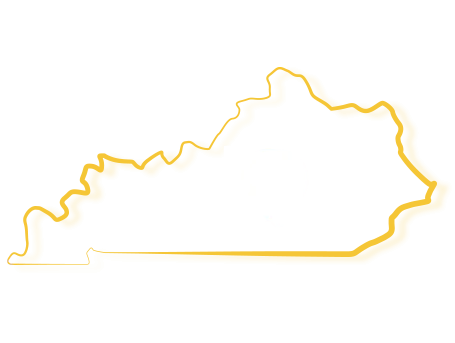IL Family Learned of Daughter’s Fatal Crash Online, Requests Graphic Photo Ban

By Zane T. Cagle | October 24, 2016 | Car Accidents, Featured, Motorcycle Accidents, Pedestrian Accidents, Personal Injury, Truck Accidents, Wrongful Death
Illinois Families Deeply Concerned Over Graphic Photos of Dead Loved Ones Online
This photo is how a Downer’s Grove mother wishes to remember her 21 year-old daughter.
A Downer’s Grove mother and several other parents are backing a law or at minimum, a “movement” to outlaw circulating graphic photos online of fatally injured motor vehicle crash victims. Frequently in our camera culture, we hear about family members finding out about their loved ones killed in crashes via social media or text before authorities can notify them.
The Downers Grove, Illinois mother first found out about her 21 year-old daughter’s death in a high-speed motorcycle crash from a video that had gone viral including her daughter’s dead body in the grisly aftermath. The mother’s point is that you can never unsee those images nor can her younger siblings.
Multiple Families Discover Family Death Via Social Media
In fact, the grisly photos remained on Facebook for several days with “likes” increasing which was disturbing to the family. For families of both of the victims of that motorcycle crash, the families were dismayed that the photos kept re-appearing on social media sites in spite of their numerous personal requests for them to be removed.
In yet another similar incident, a car struck and decapitate a 75 year-old Bolingbrook, Illinois man in a pedestrian-car crash. Again, the family found out about the death when a bystander and stranger posted the graphic video to social media. At one point after the fatal incident, an officer called out to spectators, “Come on guys, a little respect. If this was your family, you wouldn’t want people filming it”.
In some scenarios, photos are leaked or posted by bystanders or even participants in a deadly crash.
Opposing Views–Free Speech?
One of the individuals who posted and refused to remove photos despite multiple requests from the family stated is didn’t feel as if he were doing anything wrong and that Facebook was “our kind of voice”. There are many sites that have a graphic warnings and purposely post ghastly crash photos because there is a large viewing audience seeking these types photos and video footage.
Constitutional scholars agree that a law banning or prohibit filming in a public place will have a very hard time surviving a legal challenge. Such laws run the risk of stifling our forms of free speech. Martin Redish, a Northwestern University law professor said, “The value today on photos of social media taken publically is inherently very significant and we act at our peril when we start trying to limit the public in trying to take them”.
Some states laws, including one in Illinois, do prohibit the online dissemination of a specific kind of material online. This material is classified as “revenge porn”. When one person circulates a sexually explicit images of another without the subject’s consent. The difference between this law and the material involving motor vehicle crash victims is that “revenge porn” is typically generated in “private” rather than a “public” place such as an interstate or roadway. It is very possible that courts will continue to allow photographs in public and it’s very difficult to write a law that narrows enough where it would not impact legitimate speech.
Rightly so, the First Amendment does protect documented public places and that becomes challenging for everyone when events such as deaths are photographed. Generally speaking, news organizations refrain from showing graphic photos or footage of deaths unless the family is first contacted and generally only if it is a human rights issue type of story.
Living in a Camera Culture
We are becoming more accustomed to living in a camera culture. There are cameras everywhere and more importantly, most every individual is carrying a smart phone that is able to not only record video and photos but able to post them to social media in a matter of seconds. It is also a fact that people will share a particularly gruesome video or photo so that others will “like” and “share” their posts, increasing their popularity so to speak.
In many instances, this technological development in our modern culture is great. It helps in accountability and event documentation, however, it can be very hurtful and negative. If you are witness to a violent death scene, you have to think about the human beings on the other end of your camera. While you may be witness to a crash or the death of another, you have to consider several things before sharing photos of such an event. The end of someone’s life is a very raw and personal experience. If you put yourself in the victim’s shoes or in the place of the family, would you really want your grisly demise shared with the world?
While police cannot confiscate bystander’s phones, the often encourage bystanders to think about what they are doing. Kane County sheriff’s Lt. Pat Gengler said , “You would hope there’d be some personal responsibility……….they they’ve thought about what happens to the person viewing the photo”?
The speed at which video and photos can be shared makes it challenging for police to notify the family members of a death before they see the photos or video on websites or get word via text.
Personal Responsibility and Empathy
The family group’s primary complaint is that seeing the gruesome photos of their dead loved ones displayed on social media for the public to see is upsetting. More often than not, they prefer to remember their loved one as they were in life rather than the traumatic way in which they died.
While some social platforms such as Facebook have a reporting systems for notifying administrators about inappropriate images or videos. Ultimately, the personal responsibility lies within each of us making the choice to share images and video.
Some graphic images can “raise awareness about important issues…such as human rights abuses or acts of terrorist”. Often when people share these images, they are condemning them.
However, each of us might want to rethink before posting the photos of those tragically killed in motor vehicle accidents that don’t fall under the “human rights abuse” category. You have to remember that witnessing someone’s death is a very raw, deeply personal experience. Often, we are only by chance, granted this privilege. I say “privilege” because someone’s death is deeply personal and raw.
In most violent crashes, the victims cannot choose who witnesses their last moments. If you do witness the end of someone’s life, it is true you were not specifically chosen to witness this tragedy. However, out of respect for other human beings, you have a responsibility to act respectful and think about graphic photos you should or should not share out of respect for the victim and their family. How we choose to respond to this “privilege” is very important.
Just because you “Can” take photos/videos does not always mean that you “should”. Thinking about who will be impacted and if you are the appropriate person to share such photos are critical considerations.
No matter the issue, we each have to take personal responsibility to be appropriate and treat others with consideration. Any time you have an image or video that you are getting ready to post to any website, you have to think, “How will this make others feel?” And, if it involves the death of someone, you should ask yourself, “Should I be the one posting this image?” Meaning, if it is not your loved one, “Is it really your place to be sharing this news?”
Death in the family is an excruciatingly painful experience unlike any other. As a stranger, should you really intrude on the privacy of others to share a photo just because it will be viewed by many?
Personal Responsibility and Empathy
Personal responsibility is the decision to do the right thing and considering in advance how our actions will impact others. “Empathy” is another emotion that many of us frequently forget. Empathy is the ability to think beyond your own feelings and the ability to understand and share the feelings of another. The great thing is that it is never too late to become empathetic.
While it may be difficult for Illinois or any other state to implement a law banning bystanders from posting grisly videos and or images, we should look at it as an opportunity to monitor and evaluate ourselves. Before you share a graphic photo, you should consider the consequences and how others will feel when they few it. My best advice to anyone posting anything on social media is, “If you are in doubt, don’t share it”.
Motorcycle crashes, motor vehicle crashes and truck accidents can all be very grisly, horrific scenes. While first responders see these graphic injuries and deaths, thankfully, most of us do not have to see these images. On occasion, I see graphic photos from scenes of someone’s death, and I will never forget a single one of them. I agree with the parent group–it is not something you can un-see. In these wrongful death cases of mine, these photos are not my family members. I can only imagine the pain of the victims’ family to see these graphic images repeatedly.
We represent victims of motor vehicle crashes and we know the days, weeks and years following a crash can be the most challenging time in your life whether you have experienced an injury or lost a loved one. It is life-changing and you should not have to do it alone. Our attorneys are available seven days a week for free, confidential consultations.
Call toll free, (314) 276-1681 for a free consultation
Contact Us Today
The Cagle Law Firm serves accident and injury clients throughout St. Louis and the greater St. Louis metro area, including St. Louis Counties of Chesterfield, Wildwood, Eureka, Ladue, Olivette, Clayton, Kirkwood, Fenton, Affton, and Jefferson Counties of Arnold, High Ridge, Antonia, House Springs, and the eastern Missouri and southern Illinois communities. If you or your family needs legal assistance with your personal injury case, call The Cagle Law Firm at (314) 276-1681 or use our online contact form to request a free case review or get more information.
Areas Served
The Cagle Law Firm – Missouri
The Cagle Law Firm – Illinois
The Cagle Law Firm – Kentucky
CONTACT THE CAGLE LAW FIRM TODAY
Request your FREE CASE REVIEW today by calling (314) 276-1681 or by sending a message through the site contact form. Your contact info stays private and is only used to reply to your inquiry.
Whether you need information about a new injury or existing injury, our lawyers answer your questions with no-risk and no followup marketing.
Free Consultations and Case Reviews
Questions? Ask An Attorney
Fields marked with an * are required
Copyright © 2025 St. Louis Personal Injury Lawyers | The Cagle Law Firm. All rights reserved.
Disclaimer | Site Map | Privacy Policy
Get a free case review with St. Louis' best personal injury lawyers to help you win top compensation





